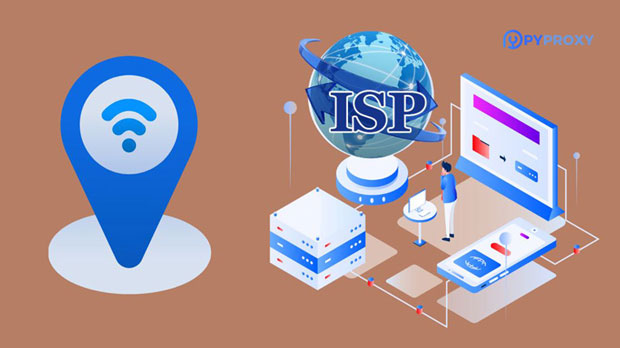When accessing proxy websites for school, sock s5 proxies have become an essential tool for securing online privacy and bypassing restrictions. However, choosing the right socks5 proxy can be challenging, given the variety of options available. Evaluating the quality of these proxies is crucial to ensure a seamless, secure, and efficient browsing experience. The main criteria to consider when assessing SOCKS5 proxies for school-related purposes include speed, reliability, security, anonymity, and customer support. By understanding these factors and knowing how to evaluate them, users can select proxies that best meet their needs for educational purposes, protecting their data and providing stable access to restricted content. 1. Understanding SOCKS5 Proxies and Their Use for SchoolSOCKS5 proxies are an advanced type of proxy that is commonly used to provide a higher level of security and anonymity compared to traditional HTTP proxies. Unlike HTTP proxies, which only handle specific web traffic, SOCKS5 proxies can route any type of internet traffic, including emails, instant messages, and video streams, which makes them suitable for a variety of school-related tasks, from research to communication. This versatility allows students and educators to bypass firewalls and access educational resources that might otherwise be restricted.2. Speed and Performance EvaluationWhen assessing SOCKS5 proxies, speed and performance are among the most crucial factors, especially when students are using them for school-related tasks like online research, virtual classes, or video streaming. A slow proxy can lead to lag, delays in video buffering, and disruptions in online learning.To evaluate the speed of a SOCKS5 proxy, you should first test its download and upload speeds through reliable speed testing tools. Compare these results with the baseline speeds of your internet connection to gauge any slowdowns caused by the proxy. Furthermore, consider the proxy’s ping rate, which reflects its responsiveness. A lower ping means faster and more efficient communication with websites and services, which is particularly important for real-time applications such as video conferencing in educational settings.3. Reliability and UptimeReliability refers to the consistency of the SOCKS5 proxy service. A high-quality proxy service must offer minimal downtime to ensure uninterrupted access to school resources. When selecting a proxy, check if the provider guarantees a certain uptime, ideally 99.9% or higher.Look for customer feedback or reviews related to the reliability of the service. Consistent positive reviews and feedback about uptime can be a good indicator of a trustworthy provider. It’s also important to test the proxy during peak and off-peak hours to assess how well it holds up under varying network conditions.4. Security and EncryptionFor school-related tasks, security is paramount, particularly when dealing with sensitive educational data and personal information. SOCKS5 proxies are generally more secure than their HTTP counterparts because they support a wider range of protocols and offer better encryption options.When evaluating SOCKS5 proxies, verify if the service provides secure encryption methods, such as AES-256, to protect your online activities from cyber threats. A high-quality SOCKS5 proxy should also be equipped with robust authentication methods to ensure that only authorized users have access to the service. Additionally, ensure that the proxy provider does not log or store user activity, as privacy is essential when using proxies for academic purposes.5. Anonymity and Privacy FeaturesFor students and educators who value privacy, anonymity features are a key consideration when selecting SOCKS5 proxies. A reliable SOCKS5 proxy should mask your IP address effectively, making it difficult for websites and online services to track your location and identity.To evaluate a proxy’s anonymity, test it by visiting websites that display your IP address and checking if the proxy successfully hides your real IP. The proxy should also allow you to choose from multiple server locations to help you bypass geographical restrictions and access educational materials that may be restricted in your region.6. Customer Support and AssistanceReliable customer support is essential when dealing with SOCKS5 proxies, especially when issues arise. Whether it’s troubleshooting connectivity problems or configuring the proxy for specific educational purposes, having responsive support can save time and prevent frustration.Choose a proxy provider that offers multiple channels of communication, such as live chat, email support, or phone assistance. A quality provider will have a knowledgeable support team available to help with technical issues related to the proxy service. Additionally, look for comprehensive help resources, such as tutorials or FAQs, to assist in setting up and maintaining the proxy.7. Compatibility with Educational Platforms and ServicesAnother important consideration when selecting SOCKS5 proxies for school-related use is compatibility with the platforms and services that students and educators rely on. Ensure that the proxy is compatible with popular educational tools such as learning management systems (LMS), online libraries, or video conferencing platforms.Test the proxy with these services to verify that it does not cause disruptions or prevent access. A high-quality SOCKS5 proxy should work seamlessly with these platforms, providing uninterrupted access to educational resources without interference.8. Cost vs. ValueWhile many SOCKS5 proxies offer competitive pricing, the most important factor to consider is the value they provide for the cost. Free proxies may seem attractive, but they often come with significant drawbacks, such as slow speeds, unreliable service, and limited security features. For school-related tasks, it’s worth investing in a paid SOCKS5 proxy that guarantees better performance, security, and support.Evaluate the pricing structure of the proxy service, keeping in mind the features you need. Many providers offer various pricing tiers based on the level of service, so choose one that fits your needs and budget. However, avoid opting for the cheapest option without considering the potential risks, as low-cost proxies often sacrifice quality.9. Additional Features and CustomizationSome SOCKS5 proxy providers offer additional features, such as the ability to switch IP addresses frequently, rotate proxies automatically, or use multiple server locations to increase browsing efficiency. These features can be especially useful in educational environments where accessing region-specific content or maintaining an uninterrupted connection is important.Consider whether these extra features align with your needs. For example, if you need to access content restricted to certain countries, proxies that offer various server locations can help you bypass those limitations. Additionally, look for customization options that allow you to adjust settings according to specific educational tasks, such as researching, attending online classes, or watching educational videos.Conclusion: Making the Right Choice for School-Related SOCKS5 Proxy ServicesChoosing the best SOCKS5 proxy for school-related purposes involves evaluating several factors, such as speed, reliability, security, privacy, compatibility, and customer support. By considering these elements, students and educators can select a proxy service that enhances their online learning experience, ensuring access to educational materials, safeguarding personal information, and maintaining smooth, uninterrupted service. Ultimately, finding the right proxy service is an investment in both the quality of education and online safety.
Jun 20, 2025



































































